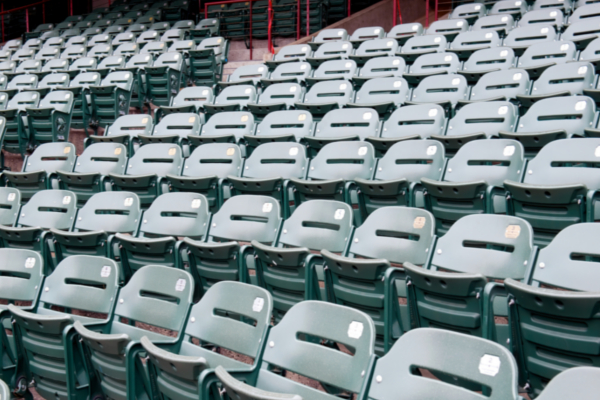
As states begin to reopen and schools contemplate how they will resume come fall, one aspect of society is already experiencing changes: Team sports, both professional and school-age. With some teams returning to the playing field, here’s what has changed.
Professional Sports
Both NASCAR and MMA resumed their matches in May, albeit with some significant changes. To date, NASCAR events have been closed to fans.
Meanwhile, the number of individuals working at the track is smaller and these people have to take additional precautions.
Still in the planning stages, baseball has yet to resume its season. Reports indicate large-scale changes for next year, including regular testing and clear quarantine guidelines for players who test positive, as well as those who have direct contact with them. At the same time, because PPE and testing resources remain limited, teams and management staff have to ensure they are not using too many resources.
Also, how teams will travel and what stadiums will look like once professional sports resume are two factors that remain up in the air. For baseball, this might mean restricted access to ballparks and a limited number of people who can be there at any given time. Vehicles used for chartered trip may also be cleaned more frequently.
However, baseball is a low-contact sport. As Emory University epidemiologist Zach Binney pointed out in an interview with NPR, contact sports greatly increase the risk of infection spreading, not just within a single league but also the teams they come in contact with. As such, guidance may eventually vary on a sport-by-sport basis.
For School Sports and Training
Gyms have already started to open back up in certain states, but those who return will be faced with a drastically different experience. Areas like the showers and locker rooms may be closed off or have restricted occupancy and the facility itself will likely have more regular and thorough cleaning processes.
Fitness centers have also debated how to address members who refuse to follow social distancing guidelines, with membership cancellation or bans being some of the proposed solutions.
Just as professional sports are approaching their upcoming seasons carefully, youth, high school and college-level sports are also taking precautions, often factoring in the nature of each activity.
One of the biggest changes, teams are limiting hands-on contact with balls and equipment. Specifically, after a player touches a ball, no one else can touch it for the remainder of the game. The ball is then kicked to the side of the court and a new one introduced. This rule stands for sports like tennis to football.
From this measure, efforts to reduce contact have been put into place throughout practice, games and training sessions, including:
- No or low-contact practices
- No access to showers
- No tossing a ball around
- Starting workouts over Zoom
- Restricted access to weight rooms, which limits the number of individuals who can use the space at one time. Players need to stand apart and no spotters are to be used for lifting.
- Travel sports teams may be limited or canceled for now, to limit any potential spread.
- Updated sanitation procedures will go above and beyond what schools have done for flu prevention in the past. At a base level, players will have to routinely use hand sanitizer.
- Personal protective equipment, including masks and gloves, will be required for coaches and staff. Athletes may have to wear face shields to reduce the spread of droplets in the air.
- Stairways may become one-way to get around large athletic complexes.
- For post-practice nutrition, only pre-packaged items will be offered – players won’t be able to bring their own food.
- Any type of contact between players will likely be discouraged. This includes not sharing towels, water bottles, high-fiving or hugging.
- In some cases, all training may be moved outdoors.
- Gathering close to discuss upcoming plays and strategies may be suspended for now.
All physical therapy clinics are open! Our staff is closely following all recommended guidelines to keep our patients safe.
To discuss training strategies for the upcoming sports season, contact us today.

